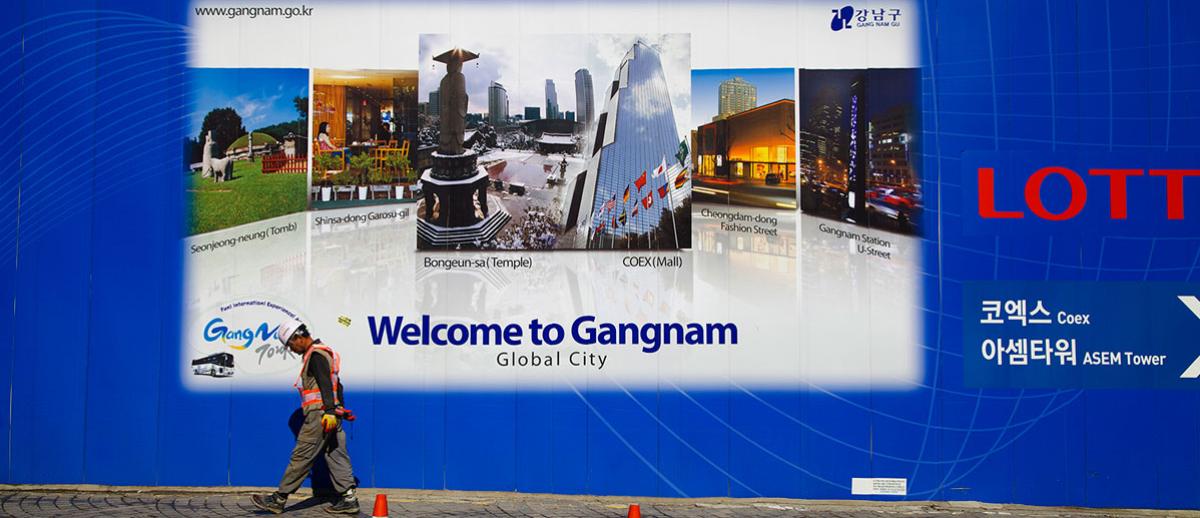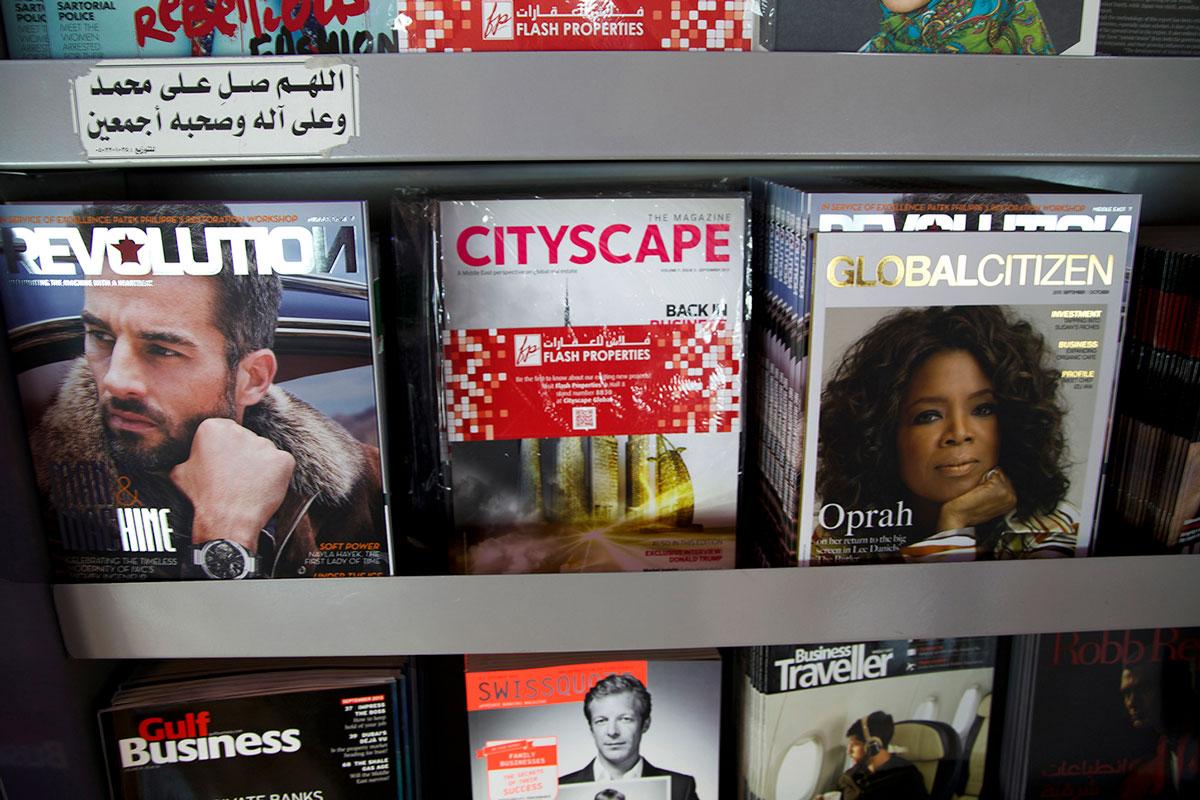Visual Culture and Globalization: The Visual Archive Project of the Global Imaginary
archive


Visual Culture and Globalization: The Visual Archive Project of the Global Imaginary
Although ‘globalization’ has been presented in the mainstream academic literature primarily as an economic-driven process, it must be emphasized that its cultural and visual-ideological aspects are of equal significance. Pervading and altering the urban social fabric through hybrid ‘cultural objects’, the ‘global’ has the symbolic power to transform urban spaces by creating the ‘global imaginary’ in a single place. Manfred Steger defines the ‘global imaginary’ as a concept referring to people’s growing consciousness of belonging to a global community. (2008) While the scholarship on globalization as an objective phenomenon has greatly proliferated, too little attention has been paid to its ‘subjective dimensions’. (Steger and James 2011) The Visual Archive Project of the Global Imaginary approaches ‘globalization’ at subjective-reflexive level through its imaginary and ‘ideational’ dimensions—the power of textual-visual formations to construct particular representations of people, events and ideas. Furthermore, while some scholars have approached the topic of the social imaginary, their investigation still relies on the textual-philosophical—abstract dimension of the phenomena. (Appadurai 2005; Steger 2008; Taylor 2007; Thompson 1982) As a consequence there is still a dearth of research on how the global imaginary is symbolically and socially produced. Thus, the visual archive project aims to contribute to fill this gap by taking into due consideration the interplay between ‘visual culture’ and ‘globalization’. This is achieved by approaching the global imaginary as deeply embedded material practices.
Visual images are powerful ‘cultural objects’ that can convey complex account of the social world and, since images are not produced in a vacuum, they unavoidably carry embedded systems of values and ideologies. As a consequence, images have the symbolic power to generate meaning. Concurring with W. J. T. Mitchell, ‘images are active players in the game of establishing and changing values. They are capable of introducing new values into the world and thus of threatening old ones.’ (2005, 105) Indeed, due to the global spread of new media technologies, the massive uses of personal electronic devices and the development of intelligent architectural interfaces, visuality is increasingly eclipsing textuality and images, with their ‘surplus of value’, dominate the world.

Thus, given the power of visual images to create meaning, they are strategic tools to trace the shifting new mindset—the global imaginary. What is more, a particular type of image, which I identified as ‘condensation symbols’ and ideological markers of globality, can also assist in better understanding the perceptions and assumptions that these images construct for us. Murray Edelman defines a ‘condensation symbol’ a particular type of image that condenses many layers of meaning. (1985) However, for the purposes of my research project I extended the notion of condensation symbols from Edelman’s analysis of the symbolic uses of politics to the investigation of textual-visual formations with regard to globalization dynamics. In doing so, I followed Steger’s first approach to the topic. (2011) Specifically, in my research the concept of ‘condensation symbol’ refers to a particular type of image that condense spatial-symbolic scales of the local, national and the global in one single visual formation or event.

The Visual Archive Project of the Global Imaginary, transdisciplinary by its very nature, is theoretically located at the crossroad of global, urban and media studies and in the space between history and theory. Due to the much discussed and contested definition of the term ‘globalization’, it may be useful to clarify that I understand ‘globalization’ as an ongoing and complex set of interrelated processes which embody a continuous transformation in the spatial organization of social relations, rather than something already concluded or defined.
While with the term ‘visual culture’ I understand the production, circulation and consumption of symbolic forms that are perceived and interpreted primarily through visual ‘cultural objects’ such as films, paintings and advertisements or, as in my case, still photographs. In other words, visual culture can be defined as the ‘way of seeing’ the visual world through our own systems of values, beliefs and ideologies. (Berger, 1990) As a consequence, due to the fact that change does not mean only change at the level of representation but also change at the deeper level of structure, it can be asserted that visual culture acts as of one of the most powerful agents of social change—history.

Founded in 2009, The Visual Archive Project of the Global Imaginary is an ongoing, independent and self-managed digital database, which aims to better understand the processes of globalization and how the global imaginary is symbolically and socially produced. The project covers still-images that the researcher began to collect in 2007 and represents a visual-historical account of the multidimensional process of transformations we are witnessing at the dawn of the twenty-first century. Through the aesthetics of change perspective and the lenses of social and political theory, the visual exploration takes into due consideration that, if the rise of the modern self-contained nation-state built homogenous cultures around the core concept of nationality—national ideology and its underlying social imaginary, in the last few decades the continuous spread of transnational cultural flows has dramatically affected this process and reshaped ‘local-national’ meanings around the ‘global’.
Visual images are powerful ‘cultural objects’ that can convey complex account of the social world and, since images are not produced in a vacuum, they unavoidably carry embedded systems of values and ideologies.
Drawing on Walter Benjamin’s materialist aesthetic theory and originally expanding Steger’s notion of the ‘global imaginary’ to its visual-ideological dimension, today the online database is a vast and ambitious project not only in terms of its archival sources but also with respect to its philosophical and historical intent, as well as to the methodological and representational challenges it poses. (Benjamin, 2002; Steger, 2008) While carrying out an ontological breakdown of the phenomenon into categories—cultural, political and ideological—the archive is organised as one gallery and conceived as an experimental model that attempts to grasp social change in history. In this sense, from a methodological point of view, the research project can be seen as a case study in itself.
In particular, through the establishment of a strategic visual research methodology that combines tasks, thinking tools and methods of critical analysis and interpretation, the research project approaches the subjective and objective aspects of globalization that are usually investigated separately from each other. Thus, in dealing with globalization from an aesthetic of change standpoint, the research project overcomes the modern dichotomy between idealism and positivism that tore the political philosophy debate of last century, while taking into consideration the ways in which visual images have their own agency.

Although it can be argued that the images that constitute The Visual Archive Project of the Global Imaginary, gathered by the researcher, are a limited, selective and highly subjective representation of concepts associated with structures, places and identity, and therefore they are not entirely unproblematic, still they are crucial keys to access the global imaginary to better understand how it is symbolically and socially produced.
Source for all images is Tommaso Durante, The Visual Archive Project of the
1. Welcome to Gangnam Global City, Seoul, Korea Source: Durante/
2. T-shirts, Monastiraki Flea market, Athens, Greece
3. Queen Elizabeth II State Visit to Melbourne, Australia, Royal fans wait in
4. Free magazines, Abu Dhabi International Airport, United Arab Emirates
5. The illuminated signs, Piccadilly Circus, London, UK
Appadurai, Arjun (2005). Modernity at Large. Minneapolis: University of Minnesota Press.
Benjamin, Walter (2002). The Arcades Project. Cambridge, MA: Harvard University Press.
Berger, John (1990). Ways of Seeing. London: Penguin.
Edelman, Murray (1985). The Symbolic Uses of Politics. Chicago: Chicago University Press.
Mitchell, W J T (2005). What Do Pictures Want? Chicago: University of Chicago Press.
Jan Nederveen, Pieterse (2004). Globalization and Culture. Lanham, MA:
Steger, Manfred (2011). “You, Me, and S/he are the World: The Ideological Condensation of
Conference, Honolulu, HI, April 1.
Steger, Manfred and James, Paul. ‘Three Dimensions of Subjective Globalization’.
Steger, Manfred (2008). The Rise of the Global Imaginary: Political Ideologies from
Taylor, Charles (2007). Modern Social Imaginaries. Durham, NC: Duke University Press.
Thompson, John (1984). Studies in Theory of Ideology. Berkley, CA: University of California.



